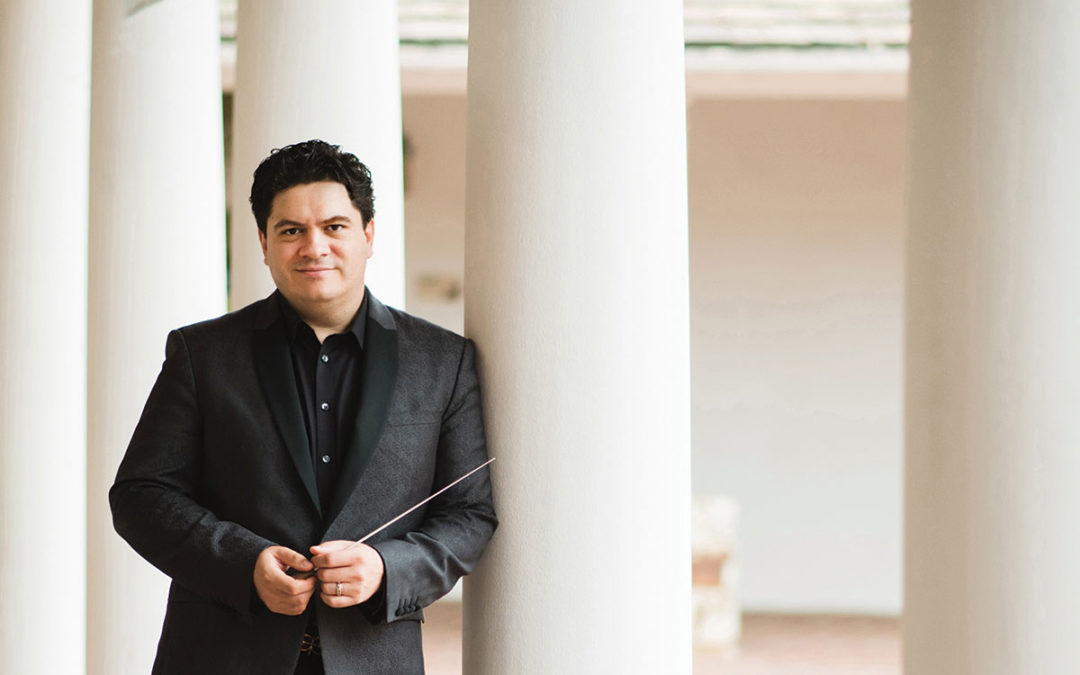BACHTRACK — FEBRUARY 24, 2019 — Spring seems to have come early this year and this was reflected in tonight’s programme with an advanced celebration of that great festival of Spring, Easter in Rimsky-Korsakov’s Russian Easter Festival Overture. Leading us in an all-Russian programme was young Romanian conductor Cristian Măcelaru, joined on stage by virtuoso Norwegian violinist Vilde Frang. Both brought the tremendous energy of their youth coupled with a deep musicianship making it a rewarding partnership.
The programme focused on some of the more outré works of the Russian repertoire. The zaniness of the Stravinsky Violin Concerto in D major married well with the liveliness of Rimsky-Korsakov’s Easter Festival Overture. The not-often heard Manfred Symphony in B minor by Tchaikovsky, with its doom-laden hero in search of forgiveness, made for a brilliantly programmatic second half.
Written after Scheherazade and Capriccio espagnol, the Russian Easter Festival Overture demonstrates Rimsky-Korsakov’s mastery in orchestration. As he himself acknowledged later on, “my orchestration had reached a considerable degree of virtuosity and bright sonority”. And this overture offers convincing proof, with energetic and vivid orchestration interspersed with fervent Orthodox chants.
It is composed of three parts: firstly, the Good Friday taunt of “Let God arise”, secondly, the Easter theme of “an Angel cried” and thirdly the declaration of the great Russian hymn “Christ is risen from the dead”. The cello and violin solos of the opening were artfully shaped, while there were some delectable, vernal incantations on the flute.
Stravinsky had written little for the violin up until this concerto and so, when starting the composition, he asked his violinist friend, Dushkin, if the opening chord was playable. Dismissed as impossible by the violinist, Dushkin later retracted this after trying the chord on his violin at home. Soloist Frang nailed this chord with laser-like accuracy at the beginning of each movement. At the start of the first movement Toccata the cheeky trumpet solo was slightly too dominant for the soloist, but it proved to be just a temporary issue. There was some wonderful, strident, muscular playing from Frang and the tricky double stops that dot the landscape of this movement were handled expertly. The small moments of rubato had an almost coquettish feel to them.
Frang’s vibrato in Aria I possessed an almost Heifetz-like intensity, and the staccato section was attacked with something akin to visceral ferocity. Aria II was lyrical and mournful and was imbued with a great sense of peace. There was a great dynamic in the final movement Capriccio between conductor, soloist and orchestra, as Frang created a scintillating dialogue with the RTÉ National Symphony Orchestra.
It’s baffling that Tchaikovsky hated his Manfred Symphony with such vehemence that he would describe it as “that repulsive work that I hate profoundly”. It’s wonderfully programmatic and while it is on the long side, its vivid characterisation, lush orchestration and powerful romanticism keeps the listener fully absorbed. Written in between his fourth and fifth symphonies, Tchaikovsky had toiled over its composition. There was nothing laboured about Măcelaru’s approach to it. There was foreboding in every note of the fulsome strings and the lugubrious bass clarinet that open the work while the summoning of the seven spirits was ear-smashingly loud and all-absorbing.
The fresh tone from the violins in the second movement Vivace contributed to the pastoral calm while there was a wonderful lively exchange between the woodwind and the strings later on. The woodwind exuded peace and calm in the third movement Andantino con moto, something that was echoed by the high strings, and even after the powerful climax, the opening stillness hovered in the air afterwards. The finale was exciting and powerful, a frenzied orgy that Măcelaru had us and the RTÉ NSO on the edge of our seats as he whipped the music to its dramatic conclusion.
Photo: Adriane White
Author: Andrew Larkin
Bachtrack, 24 Feb 2019 | Bachtrack ➭

